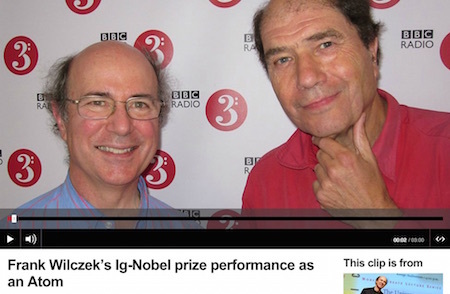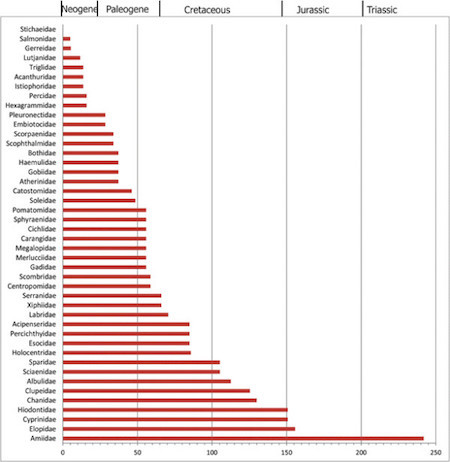Marc Abrahams's Blog, page 305
September 27, 2015
New Ig Nobel winner uses discovery to produce needed drugs
Four days after being awarded an Ig Nobel Prize for chemistry — for partially un-boiling an egg — Professor Colin Raston is being lauded for using his discovery to produce a widely needed drug that can henceforth, thanks to him, be produced cheaply and easily, practically anywhere. So says a September 28 press release from the university:
Ig Nobel egghead cracks global anaesthetic code
One of the world’s most in-demand anaesthetics can now be produced on the spot, thanks to the thermos-flask sized device that recently won Flinders University inventor Professor Colin Raston an Ig Nobel prize.
Professor Raston and his team of researchers have successfully synthesised Lidocaine using their desktop Vortex Fluidic Device (VFD), in a development with huge implications for the traditional mass production methods of the global pharmaceuticals industry.
It’s so easy to produce Lidocaine with the VFD, which made global headlines earlier this year when it unboiled an egg, that the device’s inventor, Professor Colin Raston, says it could be made in even the most remote locations, with only basic instructions, in less than an hour.
Professor Raston says the ability to produce Lidocaine, one of the World Health Organisation’s (WHO) ‘most important medicines for a basic healthcare system’, in high need areas such as war zone and developing countries signals a paradigm shift in pharmaceutical manufacture.…
The 2015 Ig Nobel Prize for chemistry was awarded to Callum Ormonde and Colin Raston [AUSTRALIA], and Tom Yuan, Stephan Kudlacek, Sameeran Kunche, Joshua N. Smith, William A. Brown, Kaitlin Pugliese, Tivoli Olsen, Mariam Iftikhar, Gregory Weiss [USA], for inventing a chemical recipe to partially un-boil an egg.
The team published details of their work, in the study “Shear-Stress-Mediated Refolding of Proteins from Aggregates and Inclusion Bodies,” Tom Z. Yuan, Callum F. G. Ormonde, Stephan T. Kudlacek, Sameeran Kunche, Joshua N. Smith, William A. Brown, Kaitlin M. Pugliese, Tivoli J. Olsen, Mariam Iftikhar, Colin L. Raston, Gregory A. Weiss, ChemBioChem, epub January 2015.
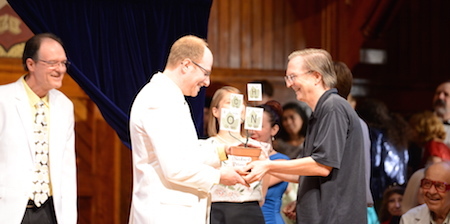
This photo (by Mike Benveniste, whose late cousin, Jacques Benveniste was a two-time Ig Nobel Prize winner) shows Professor Raston (left) and co-author Gregory Weiss (center) as Nobel laureate Jack Szostak hands them their Ig Nobel Prize. Nobel laureate Dudley Herschbach (far right) looks on.
You can watch video of the team accepting their Ig Nobel Prize.
Here’s a look at the vortex device:
And here’s a capsule version of the story of how to partially un-boil an egg:

Science: Controlling Our Bladders Makes Us Better Liars
According to a recent scientific study, we’re better at lying when we are also controlling our bladders.
Investigators Elise Fenn, Iris Blandón-Gitlin, Jennifer Coons, Catherine Pineda, and Reinalyn Echon from Claremont Graduate University were studying the Inhibitory Spillover Effect (ISE), which “occurs when performance in one self-control task facilitates performance in another (simultaneously conducted) self-control task.” Deception requires inhibitory control, and of course so does holding one’s bladder.
The following expert from the paper’s abstract provides a good summary of the authors’ findings:
Deceiving requires increased access to inhibitory control. We hypothesized that inducing liars to control urination urgency (physical inhibition) would facilitate control during deceptive interviews (cognitive inhibition). Participants drank small (low-control) or large (high-control) amounts of water. Next, they lied or told the truth to an interviewer. Third-party observers assessed the presence of behavioral cues and made true/lie judgments. In the high-control, but not the low-control condition, liars displayed significantly fewer behavioral cues to deception, more behavioral cues signaling truth, and provided longer and more complex accounts than truth-tellers.
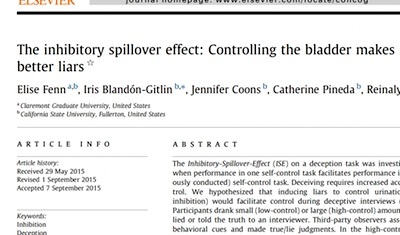
This new article cites — and takes part of its name from — the Ig Nobel-winning paper by M. A. Tuk et al.: Inhibitory spillover: Increased urination urgency facilitates impulse control in unrelated domains.
(Thanks to investigator Karen Kustedjo for alerting us to this article.)

What’s it like to be an atom (and be in love?)
Frank Wilczek tells BBC3 Radio’s “Private Passions” what it was like to be an atom, which is what Wilzcek was in his public opera-singing debut, in which he played the role of an atom who fell in love with a human being (and she with him!) in the Ig Nobel opera “Atom and Eve‘.
BONUS (unrelated, really): “The vocal tract organ is a new musical instrument“

September 26, 2015
Wedding spending and marriage duration, linked?
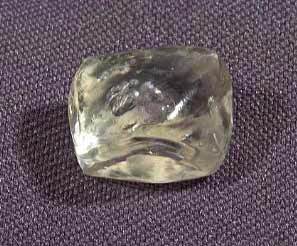 Are higher wedding expenses associated with longer-lasting marriages? And is the phrase “A diamond is forever” just a fairytale? Professors Andrew M. Francis and Hugo M. Mialon of the Economics Department at Emory University, US, express their opinions in their forthcoming paper for Economic Inquiry, entitled: ‘‘A Diamond is Forever’ and Other Fairy Tales: The Relationship between Wedding Expenses and Marriage Duration’
Are higher wedding expenses associated with longer-lasting marriages? And is the phrase “A diamond is forever” just a fairytale? Professors Andrew M. Francis and Hugo M. Mialon of the Economics Department at Emory University, US, express their opinions in their forthcoming paper for Economic Inquiry, entitled: ‘‘A Diamond is Forever’ and Other Fairy Tales: The Relationship between Wedding Expenses and Marriage Duration’
“The wedding industry has consistently sought to link wedding spending with long-lasting marriages. This paper is the first to examine this relationship statistically. We find that marriage duration is either not associated or inversely associated with spending on the engagement ring and wedding ceremony. Overall, our findings provide little evidence to support the validity of the wedding industry’s general message that connects expensive weddings with positive marital outcomes.”
Also see: (by Professor Hugo M. Mialon) ‘The Economics of Faking Ecstasy’

Jurassic Pork: Were dinosaurs and their colleagues kosher?
Dinosaurs, the so-called “paleo diet”, implied time travel, and religious theoretical sensibilities all figure in a new study called “Jurassic Pork: What Could a Jewish Time Traveler Eat?“, by Roy E. Plotnick, Jessica M. Theodor, and Thomas R. Holtz, published in the journal Evolution: Education and Outreach, vol. 8, no. 17, September 34, 2015. The authors, at the University of Illinois at Chicago, the University of Calgary, the University of Maryland, and the National Museum of Natural History, Smithsonian Institution, explain:
“Paleontologists use multiple methods to reconstruct the anatomy and behavior of extinct animals, including direct observations from well-preserved fossils and inferences from the phylogeny of modern and extinct relatives. We illustrate these techniques by reference to the biblical definitions of kosher and non-kosher animals; that is, how can we apply these approaches to the hypothetical question of whether an extinct form would have been kosher. The biblical categories do not readily map to modern understandings of systematics, but are heavily based on life mode. When given, distinguishing characteristics, such as the presence of fins and scales in aquatic animals, can be readily seen directly in fossils. In other cases, such as cud chewing, they need to be inferred from the phylogenetic relationships of the fossil forms. Dinosaurs (other than birds), unfortunately, are not kosher. A kosher “paleo diet” would be increasingly difficult further in the past….
“Figure 1 shows the known time range of the families whose members today are considered kosher and that occur in the fossil record. The range goes from today back to the oldest fossil occurrence of that family. Of the forty-four families that are found as fossils, only 14 go back as far as the Cretaceous, four to the Jurassic, and only one, the bowfins (Family Amiidae) as far back as the Triassic.”
Here is an earlier, somewhat similar — though incomplete — study, the trailer for a film called “Jurassic Park”:

September 25, 2015
Ig Nobel TV special on BS-SKY-PerfecTV — September 27
“Dr. Nakamatsu contest of special program – Ig Nobel Prize knowledge” will be a special broadcast on Japan’s BS-SKY-PerfecTV channel, on Sunday September 27, at 5:00 pm.
The program will, we are told, be composed of highlights from the June 2015 Ig Nobel show at the University of Tokyo with Marc Abrahams, Dr. Nakamats, and several other Ig Nobel Prize winners, and some brave students from the University of Tokyo.
That June show (and indirectly, this broadcast) was made possible through the generosity of some colorful donors. We want to again thank them. They are:
Platinum Sponsors: Eisaku Amano,Hirokuni Ito, Gonji Iyama,Kouji Oosawa, Toshihiro Kakimoto, Arata Samon, Toshihiro Suzuki, Kazuo Sekine, Asuka Tsuzuki, Hisashi Niizuma, Hirotada Hashimoto, Yasuto Hara, So Fujioka, Akira Yamane
Gold Sponsors: Yasumitsu Aoyama, Masashi Ishizuka, Makoto Imai, Keiko Uchida, Koichi Ota, Hironori Ozaku, Hisashi Kamiuchi, Hiroshi Kawai, Sayuri Kishi, Toshikazu Kimura, Masatoshi Kumagai, Takeshi Sasaki, Tatsuya Satou, Azumaya Kimonohiroba, Keiko Serizawa, Yoko Taniguchi, Satoru Chiba, Satoru Nakajo, Koichi Tsuji, Katsumi Tsuruta, Yasuo Tomita, Miyoko Nakagawa, Katsuroh Nishikubo, Megumi Hattori, Akira Fukuda, Tomio Horiuchi, Midori Matsumoto, Ken Murata, Yusuke Yasukawa, Hisashi Yada, Akira Yano, Shuhei Yamada, Ryusuke Yamanouchi, Jun Watanabe
And, of course, very special thanks to Sir Dr. Nakamats and his staff and family and friends — especially Hasegawa the Great!

September 24, 2015
Robot Infants Time Their Smiles to Make (Their?) Moms Smile
Robots can smile, and human mothers can react to that. This study tuned up the timing of this dance:
“Infants Time Their Smiles to Make Their Moms Smile,” Paul Ruvolo, Daniel Messinger, Javier Movellan, PLoS ONE 10(9), 2015, e0136492. The authors, at Olin College of Engineering, the University of Miami, and the University of California San Diego, explain:
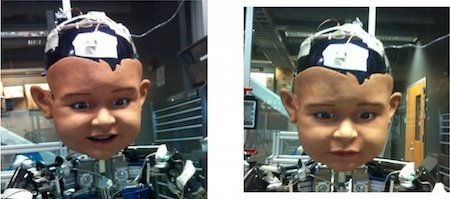
Diego-San’s Expressions.Diego-San, the robot used to interact with adults smiling (left) and not smiling (right).
“The results of our analysis show that by the time infants reach 4 months of age both mothers and infants time their smiles in a purposeful, goal-oriented manner. In our study, mothers consistently attempted to maximize the time spent in mutual smiling, while infants tried to maximize mother-only smile time. To validate this finding, we ported the smile timing strategy used by infants to a sophisticated child-like robot that automatically perceived and produced smiles while interacting with adults. As predicted, this strategy proved successful at maximizing adult-only smile time. The results indicate that by 4 months of age infants interact with their mothers in a goal-oriented manner, utilizing a sophisticated understanding of timing in social interactions.”
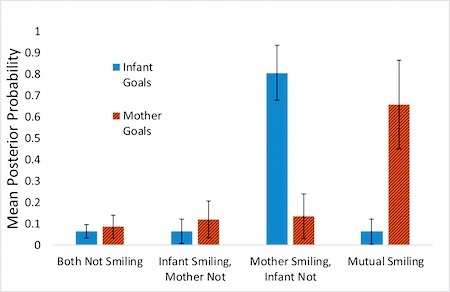
Comparison of Infant and Mother Goals.Means of the probability distributions of potential mother and infant goals. Error bars are 95% confidence intervals of the mean.

Headless mannequins – good for business (or not)?
 Mannequins in shop windows – should they have heads, or shouldn’t they? And what about mannequins displayed online? From a retailer’s point of view, the question of whether to use headed or headless mannequins is a complex one – or rather, the answers are complex. And now, for the first time, such answers can be examined in one of the only scientific studies to have investigated the effects of a mannequin’s head, or lack of a head, on shopping behavior.
Mannequins in shop windows – should they have heads, or shouldn’t they? And what about mannequins displayed online? From a retailer’s point of view, the question of whether to use headed or headless mannequins is a complex one – or rather, the answers are complex. And now, for the first time, such answers can be examined in one of the only scientific studies to have investigated the effects of a mannequin’s head, or lack of a head, on shopping behavior.
‘Does the presence of a mannequin head change shopping behavior?’ is awaiting publication in the print version of the Journal of Business Research.
[note: Our photo, not from the paper, shows headed and headless dummies for comparison]

September 23, 2015
Podcast #30: Head on Brain in Brain
Dr. Head and Dr. Brain, and the medical journal they edited (which is called Brain); kids with televisions; the peculiar faces of corporate leaders; and the medical maladies called “cello scrotum” and “guitar nipple” — all these all turn up in this week’s Improbable Research podcast.
Click on the “Venetian blinds” icon — at the lower right corner here — to select whichever week’s episode you want to hear:
SUBSCRIBE on Play.it, iTunes, or Spotify to get a new episode every week, free.
This week, Marc Abrahams tells about:
Head on Brain in Brain. (“Henry Head: The Man and His Ideas,” Russell Brain, Brain, vol. 84, no. 4, December 1961, pp. 561–6. / “Some Reflections on Brain and Mind,” Lord Brain, Brain, vol. 86, no. 3, 1963, pp. 381-402. / “A Human Experiment in Nerve Division,” W.H.R. Rivers and Henry Head, Brain, vol. 31, no. 3, 1908, pp. 323–450. / “Clinical Meeting Held May 10, 1923: Case of Right Frontal Tumour; Cracked-pot Percussion Note over Right Frontal Bone; Left Palmar Reflex,” Dr. George Riddoch and Dr. Russell Brain, Brain, vol. 46, no. 2, 1923, p. 246. / “Speech and Cerebral Localization,” Henry Head, Brain, vol. 46, no. 4, 1923, pp. 355–528. Featuring a dramatic reading by Richard Baguley . )
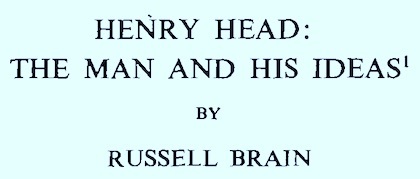
“Soft Is Hard” research. (“Characteristics Associated With Older Adolescents Who Have a Television in Their Bedrooms,” Daheia J. Barr-Anderson, Patricia van den Berg, Dianne Neumark-Sztainer, and Mary Story, Pediatrics, vol. 121, no. 4, April 2008, pp. 718–24. / “The Face of Success: Inferences From Chief Executive Officers’ Appearance Predict Company Profits,” N.O. Rule and N. Ambady, Psychological Science, vol. 19, no. 2, 2008, pp. 109–11, / “Web-based Student Evaluation of Professors: The Relations Between Perceived Quality, Easiness and Sexiness,” James Felton, John Mitchell and Michael Stinson, Assessment and Evaluation in Higher Education, vol. 29, no. 1, 2004, pp. 91–108. / “Attractiveness, Easiness, and Other Issues: Student Evaluations of Professors on RateMyProfessors.com,” James Felton, Peter T. Koper, John Mitchell and Michael Stinson, SSRN Working Paper #918283, July 2006. Featuring a dramatic reading by Jean Berko Gleason . )
Cello scrotum. (“Guitar Nipple,” P. Curtis, British Medical Journal, April 27, 1974, p. 226. / “Cello Scrotum,” J.M. Murphy, British Medical Journal, May 11, 1974, p. 335. / ” ‘Cello Scrotum’ Questioned,” Philip E. Shapiro, Journal of the American Academy of Dermatology, vol. 24, no. 4, April 1991, p. 665. / “Cello Scrotum Confession,” Elaine Murphy and John M. Murphy, British Medical Journal, January 27, 2009, p. 288. / “Pseudo-Cello Scrotum?” Anand Deshpande, British Medical Journal, vol. 388, January 27, 2009, p. 288. Featuring a dramatic reading by Chris Cotsapis . )
The 25th First Annual Ig Nobel Prize ceremony (and webcast), which will happen on Thursday, September 17, 2015.
The mysterious John Schedler or the shadowy Bruce Petschek perhaps did the sound engineering this week.
The Improbable Research podcast is all about research that makes people LAUGH, then THINK — real research, about anything and everything, from everywhere —research that may be good or bad, important or trivial, valuable or worthless. CBS distributes it, both on the new CBS Play.it web site, and on iTunes and Spotify).

September 22, 2015
Pizza’s rat-sex study, and pizza rat
Pizza’s rat-sex study has been overshadowed by this video of a rat dragging a slice of pizza, which currently is entrancing the Internet:
Pizza’s rat-sex study is:
“Hexanic Maca extract improves rat sexual performance more effectively than methanolic and chloroformic Maca extracts,” A. F. G. Cicero, S. Piacente, A. Plaza, E. Sala, R. Arletti, and Cosimo Pizza [pictured here], Andrologia, vol. 34, no. 3, June 2002, pp. 177–179. the authors are at the University of Modena and Reggio nell’Emilia, and the University of Salerno, Italy.
Professor Pizza is, technically speaking, a Professore Ordinario.

Marc Abrahams's Blog
- Marc Abrahams's profile
- 14 followers


